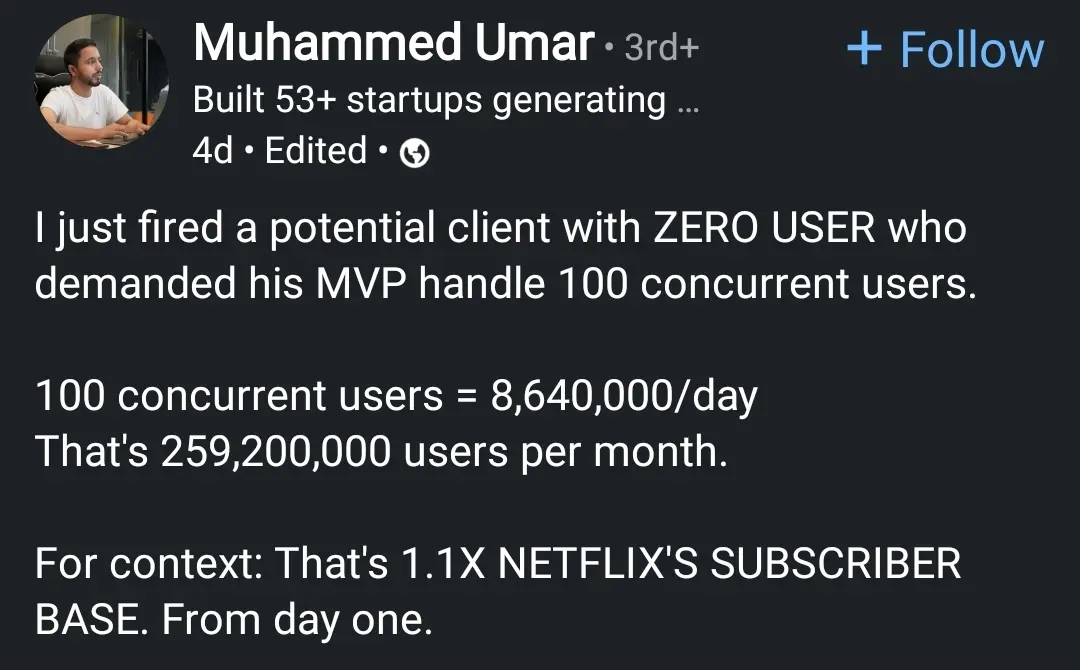this post was submitted on 10 Mar 2025
45 points (97.9% liked)
Programming Circlejerk
132 readers
2 users here now
Community to talk about enlightened programming takes
Rules:
- read and follow the programming.dev code of conduct
- no flamewars
- mark your unjerks
- only programming related content allowed
- link to the original source
- do not mention this community in places like hackernews, lobste.rs, or the general programming communities on Lemmy where we source jerk material from.
founded 2 months ago
MODERATORS
you are viewing a single comment's thread
view the rest of the comments
view the rest of the comments

Eli5?
The tweeter seems to be head of a software firm. He has a client for whom he’s building an MVP. That is the ‘minimum viable product’ – a rudimentary, first version of a piece of software that has just enough features to actually solve the client’s business needs.
For these MVPs, nice-to-have features and certain ‘quality’ measures (such as response times or the number of users it supports concurrently (i.e., at the same time)) are often of secondary concern.
The client wanted the MVP to handle 100 users concurrently (say, 100 people watch a video simultaneously, or 100 people use the web shop at the same time). The tweeter then tries to reason, with shitass math, that that means that the client expects 8.6 million users per day (100 for every second of the day).
The tweeter therefore is a dumbass.
Thank you, I actually learned something from your reply.
100 concurrent (max!) user doesn't mean you have 100 new users every second.
I have logged into my SJW account several times would using this metric I be 1 user or several users?
I think this is referring to clients that are actively connected and transmitting / receiving data. For example, watching a video means you need a fairly constant connection to the server. 100 concurrent users would be able to begin watching a, lets say 10 minute video. For these 10 minutes, the server may not accept a new user. After 10 minutes, slots free up that can handle other users. Technically it is more complicated than this, involving bandwidth, number of cores / threads, databases, queries, etc which will limit how many users the service can handle, and connections can be made and broken to allow the service to serve a larger number of concurrent clients.
In the above example, you have 100 users every 10 minutes which is 14,400 users a day assuming 100% utilization